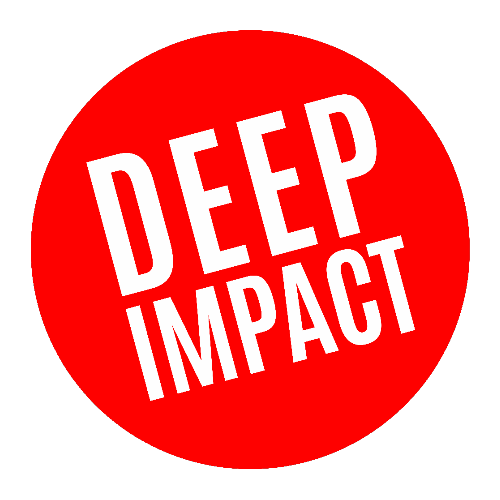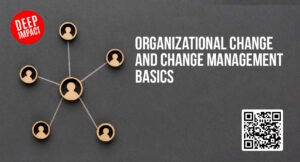Adaptability is an important quality in today’s unpredictable world. Developing adaptive leadership skills is crucial for effective leadership, regardless of team size and current conditions.
Navigating workforce disruptions, hybrid work environments, and cultural challenges has highlighted the need for adaptive leaders to be flexible, resilient, and empathetic. An adaptive leadership framework can help organisations tackle these challenges by fostering a mindset that embraces change and promotes a culture that values resilience and innovation.
Insights for Adaptive Leaders
Research from McKinsey highlights the importance of adaptive leadership in fostering resilience, a critical asset for navigating the challenges of a post-pandemic environment. It’s no longer enough to have basic leadership skills; leaders must also demonstrate adaptive leadership skills and understand the unique challenges faced by their teams. Similarly, PwC’s Future of Work and Skills Survey emphasizes the need for adaptive leadership in managing workforce transitions and preparing for potential future disruptions.
In this guide, we’ll talk about the principles of adaptive leadership and why it matters today. We’ll outline this model and provide the actionable steps for integrating adaptability within your organization ready to face uncertainties and solve problems confidently.
PwC’s Future of Work and Skills Survey
PwC’s survey provides valuable insight into the increasing need for adaptive leadership as organizations grapple with unprecedented workforce disruptions. The leader today faces a growing set of complex challenges, from managing organizational change to the burnout of employees.
According to the survey, building a resilient and agile workforce requires a proactive approach where the adaptive leader must act decisively on critical workforce concerns. However, only a small portion of executives report feeling fully prepared to tackle these adaptive challenges – especially in subjects like automation, upskilling, and integration of new technologies.
Overcoming Adaptive Challenges
The survey reveals that although many company heads recognize the importance of every adaptive change, their hesitation over solutions may ultimately hinder progress in addressing these workforce needs.
To navigate these disruptions, PwC recommends six “no-regrets” plays that organizations should prioritize for workforce durability. Among the real-life examples, is the ability to anticipate and adjust through scenario-based and dynamic planning. Particularly, dynamic planning prepares the adaptive leader to address different potential outcomes.
Despite the benefits, only around a third of the leaders surveyed agreed that they utilize these new strategies. There is room for growth in the adaptive leadership model.
A Closer Look at The Pillars of Adaptive Leadership
There are four (4) Key Pillars – Observe, Interpret, Intervene, and Adapt. Each pillar plays a unique role in guiding the adaptive leader to understand their surroundings, act effectively, and continuously improve their strategies. This framework allows leaders to respond to change as well as cultivate resilience within their teams. Here’s a look at each pillar and their scope:
Observe
Adaptive leadership begins with keen observation. This involves staying alert to changes in your surroundings– external marketing shifts or internal team dynamics and being attuned to subtle signals like employee morale or shifts in customer needs. By actively listening and watching, adaptive leaders can avoid knee-jerk reactions and instead gather insights essential to making informed decisions. McKinsey’s framework highlights this stage as the foundation of adaptive leadership.
Interpret
Observation is just the starting point, what sets adaptive leaders apart is their ability to interpret what they’ve observed. This involves analyzing data, recognizing patterns, and making sense of the observed elements. Interpretation is crucial because observations alone may not reveal the full picture. Adaptive leaders must be able to connect the dots to understand the broader implications. For instance, a decrease in team productivity could stem from various sources such as poor communication, burnout, or even external stressors. Without proper interpretation, leaders may misidentify issues which leads to ineffective intervention.
Intervene
The third pillar—intervention—is where observation and interpretation turn into action. Adaptive leaders act thoughtfully, balancing urgency with careful planning. Collaboration is key: by involving the team in decision-making, leaders foster trust and ensure solutions are embraced.
Empathetic intervention involves a deep understanding of the situation and the parties involved. This helps to reinforce trust and increases the likelihood of a successful outcome.
Adapt
The final pillar is adaptability. It is an almost continuous learning process of reining strategies based on new information. Unlike traditional leadership models, adaptive leadership emphasizes flexibility and responsiveness. Leaders must be willing to reassess their approaches, learn from successes and setbacks, and then adjust their strategies accordingly. Moreover, adaptability isn’t just an individual trait—it’s a cultural value. By fostering a workplace that celebrates learning and resilience, leaders empower their teams to evolve alongside them, ensuring everyone is ready to face future challenges.
Combined, these pillars create a framework that equips leaders to handle uncertainty with composure emotional intelligence and insight. By observing without bias, interpreting with clarity, intervening with purpose, and adapting with agility – leaders can build a resilient organization prepared to face present and future adaptive challenges.
You might also like: Understanding Leadership Styles
Why Adaptive Leadership Matters in Today’s World
The modern business world is volatile and leaders are increasingly expected to handle rapid changes in technology, geopolitical risks, and evolving societal expectations. For example, Stephen Friend, founder of Sage Bionetworks, embodies adaptive leadership with his commitment to collaboration and innovation. Friend left a successful career in pharmaceuticals to co-found a platform that breaks down data silos and promotes open science. By prioritizing transparency and shared values, Friend has not only fostered innovation but benchmarked adaptive leadership that emphasizes moral responsibility.
The call for adaptive leadership is further emphasized by global trends. This includes Environmental, Social, and Governance initiatives and the need for Diversity, Equity, and Inclusion in workplaces. According to a recent Robert Half report, leaders today must adapt to meet the expectations of a multigenerational workforce. Andrea Wong of Robert Half Singapore points out that today’s leaders must “adapt their leadership styles to better manage a multigenerational workforce”. Likewise, Boyden’s 2023 Global Executive Survey shows that adaptive leaders are energizing organizations by embracing long-term value creation, digital transformation, and sustainability.
In Asia, the Center for Asia Leadership champions this approach promoting reflective, empathetic leadership for difficult environments. Together, these insights and resources emphasize adaptive leadership and its ability to inspire teams to embrace a shared sense of purpose.
Adaptive Leadership Framework and Other Models

Heifetz’s Adaptive Leadership Model emphasizes navigating complex challenges by focusing on adaptability, collaboration, and resilience. In applying this model, leaders are encouraged to balance the pressures of immediate issues with long-term organizational goals. This aligns closely with the adaptive, leadership style that Stephen Friend demonstrated at Sage Bionetworks. Moreover, Grady’s research on adaptive leadership during the COVID-19 pandemic shows how transparency and empathy are essential in building trust in uncertain times. By prioritizing honest communication and demonstrating a deep understanding of stakeholders’ needs – leaders can create an environment of trust and psychological safety.
Implementing Adaptive Leadership in Your Organization
So how do you implement adaptive leadership? Here are some ways to integrate this into your daily life.
Encourage Empathy-Driven Leadership
Highlight the role of empathy in building a resilient work culture that reduces burnout, boosts morale, and enhances overall innovation
Tips to Build Transparent Communication
- Holding regular check-ins with the team. Touching base can include one-on-one meetings to discuss progress, challenges, and feedback.
- Set clear expectations by defining roles, responsibilities, and goals.
- Regularly update employees on company performance, goals, and changes. This promotes alignment and reduces uncertainty during transitions.
- Create open feedback channels like suggestion boxes or anonymous surveys to encourage honest feedback without fear of judgment.
Fostering Flexibility and Innovation Through Feedback Loops
Encourage managers to implement regular feedback loops using feedback as a tool for continuous improvement.
Embedding a Vision for Long-Term Adaptability
Discuss the importance of a clear vision to engage teams and prepare them to respond flexibly to emerging challenges. To achieve this, leaders should define a compelling and future-focused vision that highlights adaptability and consistent communication.
Linking the vision to daily actions ensures that employees see how their roles contribute to the organisation’s overall resilience. Recognising contributions aligned with the vision further motivates teams and reinforces their commitment to adaptability.
Overcoming Challenges in Adaptive Leadership
Of course, adaptive leadership is not a cure-all and comes with its own set of challenges. Resistance can happen – especially without building psychological safety. Team members must be comfortable in openly discussing ideas without fear of judgment. However, resistance often persists due to ingrained organizational habits and cultural norms that favor stability.
PwC’s survey also identifies leadership capability and organizational culture as significant barriers – which suggests that leaders need to enhance planning. Additionally, Gallup’s research highlights that adaptive leaders who promote flexibility not only reduce resistance but also boost engagement and performance during turbulent times.
Conclusion: A Roadmap to Adaptive Leadership
Ultimately, adaptive leadership is important for today’s business environment. McKinsey’s research highlights adaptability as the catalyst for innovation continuous growth and resilience while PwC’s Survey further emphasizes the role of adaptive leadership in balancing immediate goals with long-term strategy. By integrating empathy and flexibility – leaders can build more agile and engaged teams that thrive through change.
Want to build your adaptive leadership skills? Contact us today to explore how we can help you navigate uncertainty and lead effectively.
Also read: Best Leadership Training Provider







